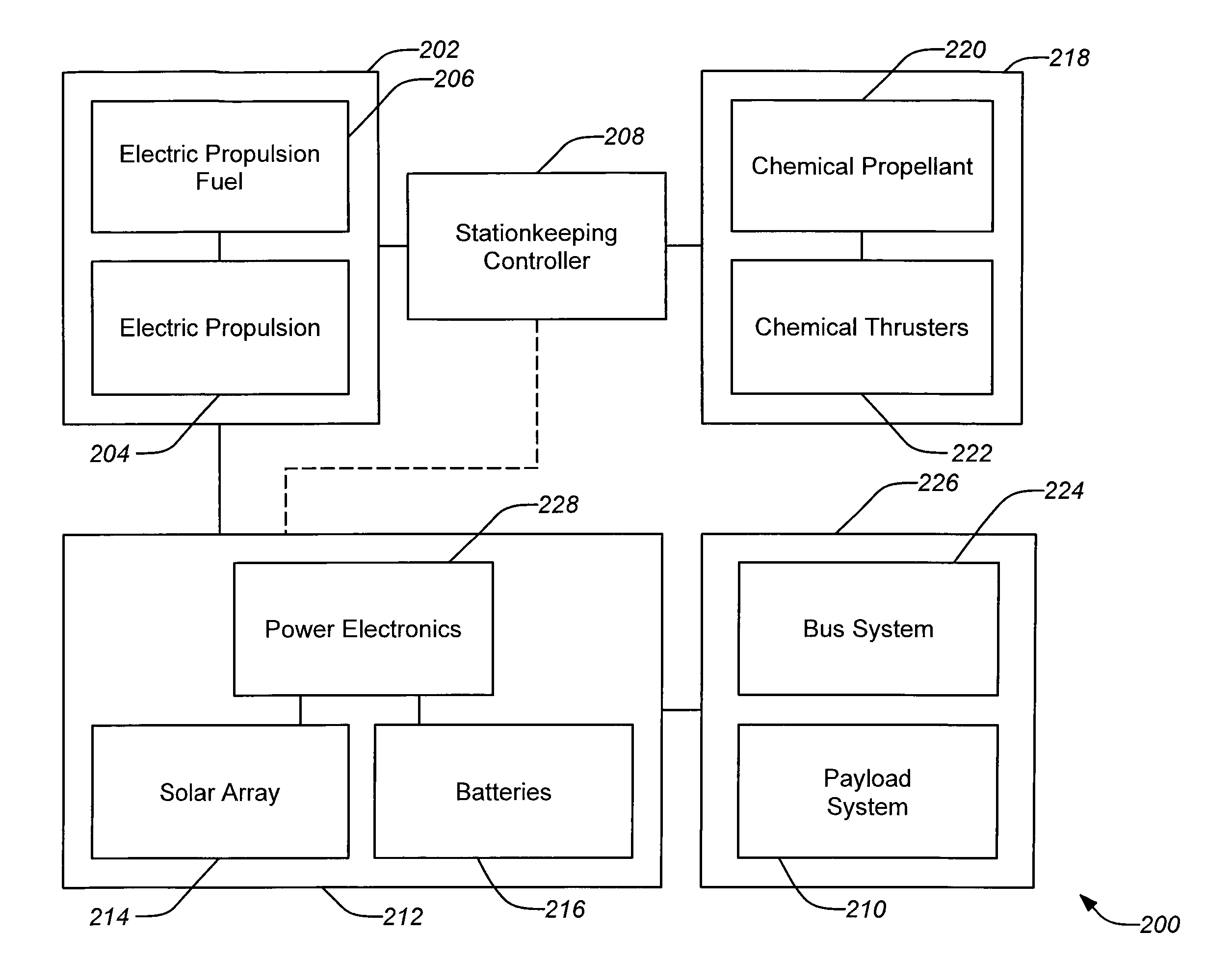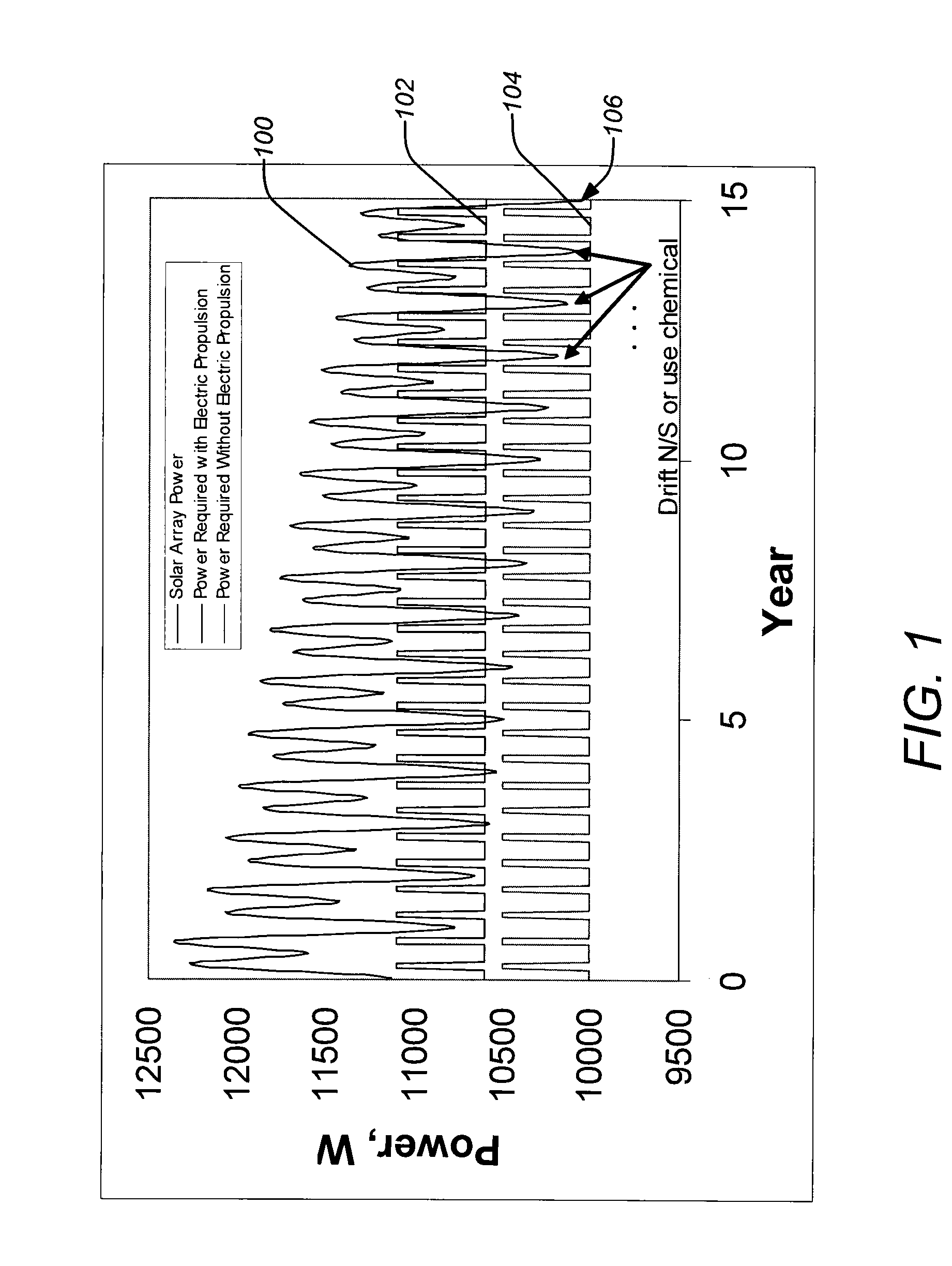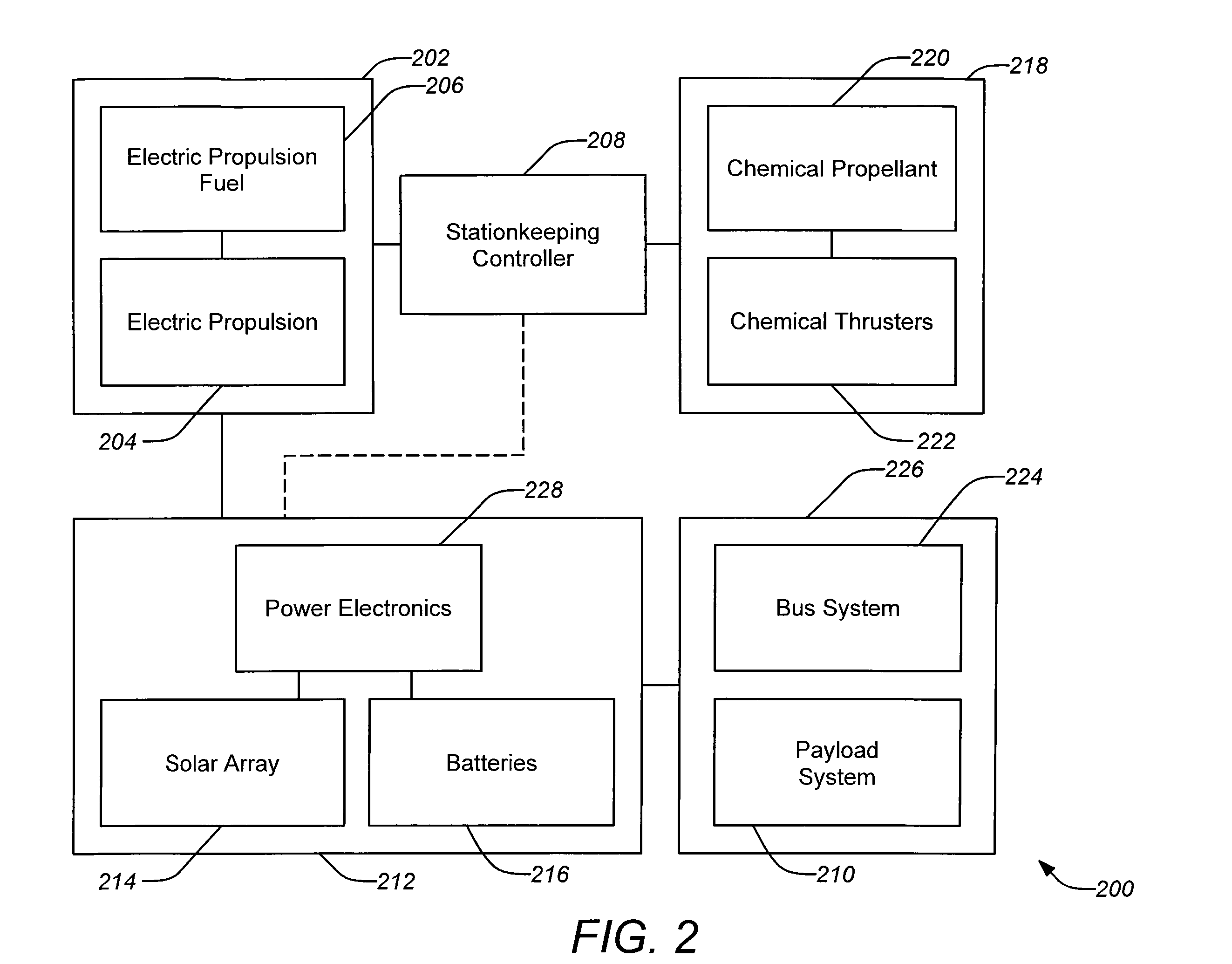Power optimized system for electric propulsion stationkeeping geosynchronous spacecraft
a power optimization and electric propulsion technology, applied in the field of spacecraft propulsion orbit control, can solve the problems of insufficient power generation, insufficient generated electrical power, and insufficient solar power generation, and achieve the effect of reducing the overall electrical power margin of the solar array system design and reducing the required solar power system
- Summary
- Abstract
- Description
- Claims
- Application Information
AI Technical Summary
Benefits of technology
Problems solved by technology
Method used
Image
Examples
Embodiment Construction
[0020]1. Overview
[0021]In conventional satellites that employ chemical propulsion, large geostationary satellites typically require many hundreds of kilograms of propellant for North-South stationkeeping, East-West, stationkeeping, and momentum management. More recently, the use of electric propulsion systems have reduced this propellant requirement (on the order of one hundred kilograms), but at the cost of increasing the required solar array electrical power output by hundreds of watts. With typical solar array costs, this can result in increases of over $100Ks in solar array cost alone, and several square meters of additional array area that impacts the mass and the attitude control system.
[0022]For example, this is true for geostationary satellites which require the inclination be maintained near zero degrees (typically ±0.1 degrees). The North-South portion of the orbit control dominates the propellant usage, being roughly ninety percent of the velocity change (delta-v) require...
PUM
 Login to View More
Login to View More Abstract
Description
Claims
Application Information
 Login to View More
Login to View More - R&D
- Intellectual Property
- Life Sciences
- Materials
- Tech Scout
- Unparalleled Data Quality
- Higher Quality Content
- 60% Fewer Hallucinations
Browse by: Latest US Patents, China's latest patents, Technical Efficacy Thesaurus, Application Domain, Technology Topic, Popular Technical Reports.
© 2025 PatSnap. All rights reserved.Legal|Privacy policy|Modern Slavery Act Transparency Statement|Sitemap|About US| Contact US: help@patsnap.com



